After a Cow Gives Birth When Does Is Come Into Heat Again
Calving Time Management for Beef Cows and Heifers
Past Glenn Selk
- Jump To:
- Recognize Normal Calving
- The Three Stages of Parturition
- Dystocia
- Prepare Before Helping
- Signs of Impending Calving in Cows or Heifers
- When and How to Examine the Cow
- Proper Placement of Obstetrical Chains
- Forced Extraction of the Calf
- Anterior Presentation
- Posterior Presentation
- Other Ideas on Pulling Calves
- Abnormal Presentations
- Rotating the Dogie at Parturition to Help in Delivery
- Prolapses
- Summary
- References
Calf losses at calving time are often a result of dystocia (difficult calving) problems. Many of these losses occur to calves born to first calf heifers and can exist prevented if the heifers and cows are watched closely and the dystocia bug detected and corrected early. A veterinary should handle serious and complicated calving bug. Ranchers must utilize proficient judgment in their decisions every bit to which problems will require professional help, and the earlier aid is sought the greater the survival rate of both cow and calf.
Recognize Normal Calving
If the calf is unremarkably presented (Figure 1) and the pelvic area is large plenty, the vast bulk of animals volition give birth without assist. Recognizing a normal calving is just as important as knowing when a calving is abnormal. This way you will non give aid when it is non needed.
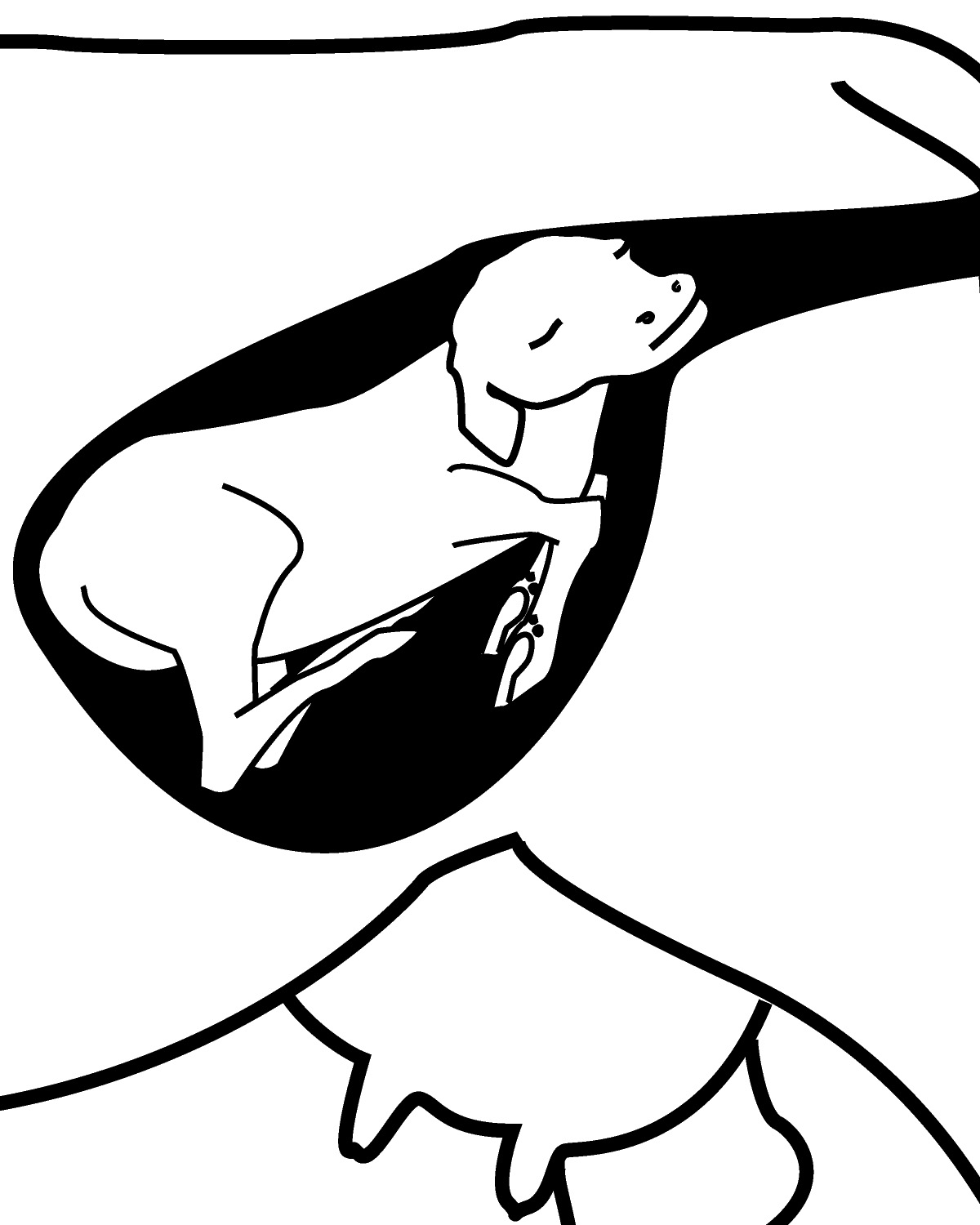
Figure 1. An anterior presentation
The Three Stages of Parturition
Stage 1
The first phase of parturition is dilation of the cervix. The normal cervix is tightly closed right upwards until the cervical plug is completely dissolved. In stage 1, cervical dilation begins some iv to 24 hours before the actual birth. During this time the progesterone cake is no longer nowadays and the uterine muscles are becoming more sensitive to all factors that increase the charge per unit and strength of contractions. At the beginning, the contractile forces primarily influence the relaxation of the cervix merely uterine muscular activity is even so rather quiet. Stage 1 is likely to go completely unnoticed, but there may be some behavioral differences such as isolation or discomfort. Near the stop of stage 1 ranchers may observe elevation of the tail, switching of the tail, and increased mucous discharge.
Stage 2
The second phase of parturition is defined as the delivery of the newborn. It begins with the archway of the membranes and fetus into the pelvic canal and ends with the completed nascence of the dogie. The second stage is the ane producers are actually interested in considering this is where all the activeness is. Clinically the onset of phase 2 is marked by the appearance of membranes or h2o pocketbook at the vulva. The traditional texts, fact sheets, magazines, and other publications state that stage ii in cattle lasts from two to four hours. Information from Oklahoma State University and the USDA experiment station at Miles Urban center, Montana, would indicate that stage 2 is much shorter being approximately one hr for heifers and ane-half hour for adult cows. See When and How to Examine a Cow on page 3. In heifers, not only is the pelvic opening smaller, but also the soft tissue has never been expanded. Older cows accept had deliveries before and birth should get quite rapidly unless there is some abnormality such as a very large dogie, backwards calf, leg back, or twins.
Stage 3
The tertiary stage of parturition is the shedding of the placenta or fetal membranes. In cattle this normally occurs in less than eight to 12 hours. The membranes are considered retained if afterwards 12 hours they have not been shed. Years ago it was considered necessary to remove the membranes past manually unbuttoning the attachments. Enquiry has shown that manual removal is detrimental to uterine health and future conception rates. Administration of antibiotics usually will guard against infection and the placenta will slough in four to seven days. Contact your veterinarian for the proper management of retained placenta.
Dystocia
What is dystocia or a difficult nativity? Traditionally, it is any birth that has needed help. According to that definition, whatsoever unassisted birth was a normal nascency, but past the definition an unassisted birth could all the same result in weak or dead dogie at birth. A more modern definition of dystocia would be a nascence that needs assistance or results in a weakened or dead calf or injury to the dam.
Causes of Dystocia
What are the causes of dystocia? Most common is relative fetal oversize, which could be defined as a calf too large, pelvis too pocket-size, or both. As for calving difficulty, prevention is worth a pound of cure. Proper sire pick is a primal to preventing calving difficulty. Underdeveloped heifers and heifers bred to bulls with large birth weights are both factors that cause increased incidence of difficult births. The 2d most prevalent crusade is abnormal presentation or position. The normal presentation in cattle is anterior presentation or caput start and the normal position would be right side up with caput and fore limbs extended into the pelvic canal. Whatsoever position that involves the calf'southward head turned back or one of the legs turned back is aberrant. Remember a normal delivery cannot be achieved unless the head and both front end limbs are presented into the pelvic canal and on through the vulva. A third crusade of dystocia would be lack of uterine contractions or uterine fatigue. The causes of this are circuitous and not completely understood. Sometimes hormonal imbalances may result in the cervix not existence completely dilated or uterine contractions not occurring frequently or strongly enough. Low calcium levels such every bit seen with milk fever or grass tetany may be responsible. In any case those problems usually require the assistance of a veterinarian to correct. Other causes of dystocia are twins or genetic mistakes (fetal monsters).
Effects of Dystocia on the Calf
What are the furnishings of dystocia or difficult nascency on the dogie? Obvious to everyone is a expressionless calf at birth or one killed during the aid procedure. Additional effects include trauma such as leg fractures, ruptured diaphragm, and nervus damage due to excessive pulling, improper placement of bondage, or the development of a hiplock. A third and profoundly disregarded result is a weak calf, sometimes called weak calf syndrome, which may be brought on by a prolonged stage 2. This is due to increased time exposed to increased pressure associated with increased uterine contractions and straining of the dam.
A prolonged phase ii with no progress in delivery of the calf is going to result in decreased oxygen and increased carbon dioxide to the fetus. Such calves do non have normal respiratory efforts. They do non have strong gasping and panting efforts. They do not take rapid respiration or heart rates necessary to distribute oxygen to the tissues and carbon dioxide dorsum to the lungs. Lactic acid and carbon dioxide levels remain quite high. These calves are depressed, they practice not sit up well, they do non shake their heads and ears, and if weather is common cold they practise not shiver to warm themselves. Shivering increases metabolism, which increases estrus. These calves take poor metabolism to begin with and their trunk temperature consequently drops. Fifty-fifty those that get-go appeared to breath and sit up normally shortly become depressed, are slow to rise, and are slow to nurse. Many exercise non nurse without assistance and dice within 12 to 24 hours. Fifty-fifty those that practice nurse, may nurse too late for good antibody absorption. In summary, the consequence of dystocia is non simply expressionless calves and injured heifers, but also weak and sick calves.
Effects of Dystocia on Post-calving Fertility
In addition to being the greatest cause of baby calf mortality, calving difficulty markedly reduces reproductive functioning during the adjacent breeding flavour.
Results from a Montana study (Doornbos, et al., 1984) showed that heifers receiving assistance in early stage ii of parturition returned to oestrus earlier in the post-calving period and had higher pregnancy rates than heifers receiving traditionally accepted obstetric help (Figure 2). In this study heifers were either assisted when the fetal membranes (water purse) appeared (Early) or were allowed to progress normally and assisted merely if calving was non completed within two hours of the appearance of the h2o bag (Late).
Heifers that were allowed to suffer a prolonged labor had a 17% lower charge per unit of cycling at the start of the side by side convenance season. In addition, the rebreeding percentage was xx% lower than the counterparts that were given assistance in the showtime hour of labor.
Prolonged deliveries of baby calves (in excess of 1 to i and a half hours) often event in weakened calves and reduced rebreeding performance in young cows.
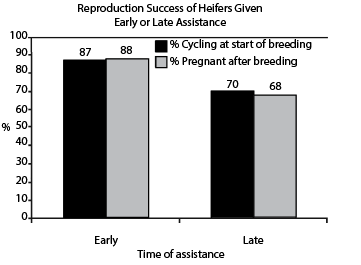
Figure 2. Impact of early or tardily assistance in subsequent rebreeding operation of first dogie heifers. Doornbos, et al. 1984.
Prepare Before Helping
- Equipment: Before calving flavour starts do a walk through of pens, chutes, and calving stalls. Make sure that all are clean, dry, strong, safe, and performance correctly. This is a lot easier to do on a sunny afternoon than on a common cold dark night when you need them.
- Protocol: Before calving flavour starts develop a program of what to exercise, when to practise it, who to call for help (along with telephone numbers), and how to know when y'all need assistance. Brand sure all family members or helpers are familiar with the plan. It may assistance to write it out and mail copies in convenient places. Talk to the local veterinary about the protocol and comprise his/her suggestions. Your veterinarian will be a lot more than helpful when y'all have an emergency during the kids' school program if you have talked a few times during regular hours.
- Lubrication: Many lubricants have been used and ane of the best lubricants is probably the simplest – not-detergent lather and warm water.
- Supplies: The stockman should always accept in his medicine chest the post-obit: disposable obstetrical sleeves, non-irritant antiseptic, lubricant, obstetrical bondage (60 inch and/or two 30 inch bondage), two obstetrical handles, mechanical calf pullers, and injectable antibiotics. Do not forget the simple things like a proficient flashlight with actress batteries and some old towels or a roll of paper towels. It may be helpful for you to have all these things and other items you may want to include packed into a 5 gallon saucepan to brand up an obstetrical kit so you lot can take hold of everything at once.
Signs of Impending Calving in Cows or Heifers
Equally the calving flavour approaches, the cows will show typical signs that will indicate parturition is imminent. Changes that are gradually seen are udder development or making bag and the relaxation and swelling of the vulva or springing. These indicate the moo-cow is due to calve in the almost hereafter. There is much difference betwixt individuals in the development of these signs and certainly age is a factor. The start calf heifer, peculiarly in the milking breeds, develops udder for a very long fourth dimension, sometimes for two or three months before parturition. The springing can exist highly variable too. Well-nigh people notice that Brahman influence cattle seem to spring much more than does a Holstein.
Typically, in the immediate two weeks preceding calving, springing becomes more evident, the udder is filling, and one of the things that might be seen is the loss of the cervical plug. This is a very thick tenacious, mucous cloth hanging from the vulva. It may exist seen pooling behind the cow when she is lying down. Some people mistakenly think this happens immediately before calving, but in fact this can be seen weeks before parturition and therefore is only another sign that the calving season is here.
The immediate signs that usually occur within 24 hours of calving would be relaxation of the pelvic ligaments and strutting of the teats. These can be fairly dependable for the owner that watches his cows several times a twenty-four hour period during the calving season. The casual observer or even the veterinarian who is knowledgeable of the signs but sees the herd infrequently cannot accurately predict calving time from these signs. The relaxation of the pelvic ligaments really cannot be observed in fat cows (body condition score 7 or greater). Even so, relaxations of the ligaments tin can be seen very conspicuously in thin or moderate torso condition cows and can be a sign of impending parturition within the next 12 to 24 hours. These changes are signs the producer or herdsman tin use to more closely pinpoint calving fourth dimension. Strutting of the teats is not really very undecayed. Some heavy milking cows will take strutting of the teats as much as two or 3 days earlier calving and on the other paw, a thin poor milking cow may calve without strutting of the teats.
Another matter that might be seen in the immediate 12 hours earlier calving would be variable behavior such as a cow that does non come up upwardly to eat or a cow that isolates herself into a particular corner of the pasture. All the same, most of them have few behavioral changes until the parturition process starts.
When and How to Examine the Cow
Information technology is of import to know with complete confidence exactly when and how long to leave the cow and when to seek help. An issue facing the rancher at calving time is the amount of time heifers or cows are allowed to be in labor before assistance is given. Traditional textbooks, fact sheets, and magazine articles country that phase ii of labor lasted from 2 to four hours. Phase ii is defined as that portion of the birthing process from the first advent of the water purse until the infant calf is delivered. Data from Oklahoma Land University and the USDA experiment station at Miles City, Montana, clearly show that stage 2 is much shorter, lasting approximately 60 minutes in first calf heifers and 30 minutes in mature cows (Table 1).
In these studies, heifers that were in stage 2 labor much more than than one hour or cows that were in stage 2 much more than than 30 minutes definitely needed help. Enquiry information also shows that calves from prolonged deliveries are weaker and more than disease prone, even if born alive. In add-on, cows or heifers with prolonged deliveries return to heat later and are less likely to be bred for the next dogie crop. Consequently a good rule of thumb: If the heifer is non making significant progress i hour after the h2o purse or feet appear, examine the heifer to see if yous tin provide help. Mature cows should be watched for just thirty minutes before a vaginal examine is conducted. If you cannot safely deliver the calf yourself at this time, call your local veterinarian immediately.
Most ranches develop heifers fully and use calving ease bulls to prevent calving difficulties. Yet, a few difficult births are going to occur each calving season. Using the concept of evening feeding to become more heifers calving in daylight and giving help early volition save a few more than calves. This results in healthier more productive two-twelvemonth cows to rebreed adjacent yr.
If nil is showing after a period of intensive straining of second-stage labor – a period of approximately 30 minutes in a cow and 60 minutes in a heifer – then examine her to decide if presentation is normal. Wash the vulva, anus, and the area in between using soap and warm water. Using a disposable sleeve (shoulder length) and a skilful lubricant (usually bachelor from your veterinarian), insert your hand slowly and do not rupture the waterbag. If the calf's presentation is not an anterior (Figure 1) or posterior position (Figure 3) or if the calf is very big or the heifer pocket-sized, yous may want to seek professional aid.
Table ane. – Research results for length of stage 2 parturition.
| Report | No. of animals | Length of stage ii |
|---|---|---|
| USDA (Montana)* | 31 mature cows | 22.five minutes |
| USDA (Montana)* | 29 first calf heifers | 54.1 minutes |
| Oklahoma State University** | 35 first dogie heifers | 55.0 minutes |
*Doornbos, et al. 1984. JAS: 59:ane
**Putnam, et al. 1985. Therio: 24:385
Proper Placement of Obstetrical Chains
To properly utilize obstetrical chains when assisting with a difficult birth, follow the instance in Figure 4. To adhere the chain, loop it around the sparse part of the leg to a higher place the fetlock. Then, make a half hitch and tighten it below the joint and to a higher place the human foot. Brand certain that the chain is positioned in such a mode that it goes over the top of the toes. In this manner the pressure is applied so equally to pull the precipitous points of the calf's hooves abroad from the soft tissue of the vaginal wall.
Forced Extraction of the Calf
Information technology is very important at all times to exert pressure simply when the brute strains and to relax completely when the patient relaxes. The former idea of maintaining a steady pressure level during aid is wrong, unless the cow has already given up and no help is coming from her.
Excessive or improper pressure oftentimes causes injuries to the dam such every bit vaginal tears, uterine rupture, paralysis, or uterine prolapse. All can usually exist prevented but when they occur they demand the immediate attention of your veterinarian.
Vaginal tears generally heal with proper antibody therapy. Uterine rupture unremarkably results in death. Some animals will recover from calving paralysis but may require prolonged care and may not brood again.
Pulling on a calf should but be washed when the presentation and posture of the calf are normal. This applies both to an inductive position (Figure one) and a posterior position (Figure 3). Backlog force should never exist used in pulling a calf. In most cases, no more than two men should be immune to pull and so just when the moo-cow strains. Lubricant and patience will oftentimes solve the tightest case. Use extreme circumspection if a mechanical puller is being used.
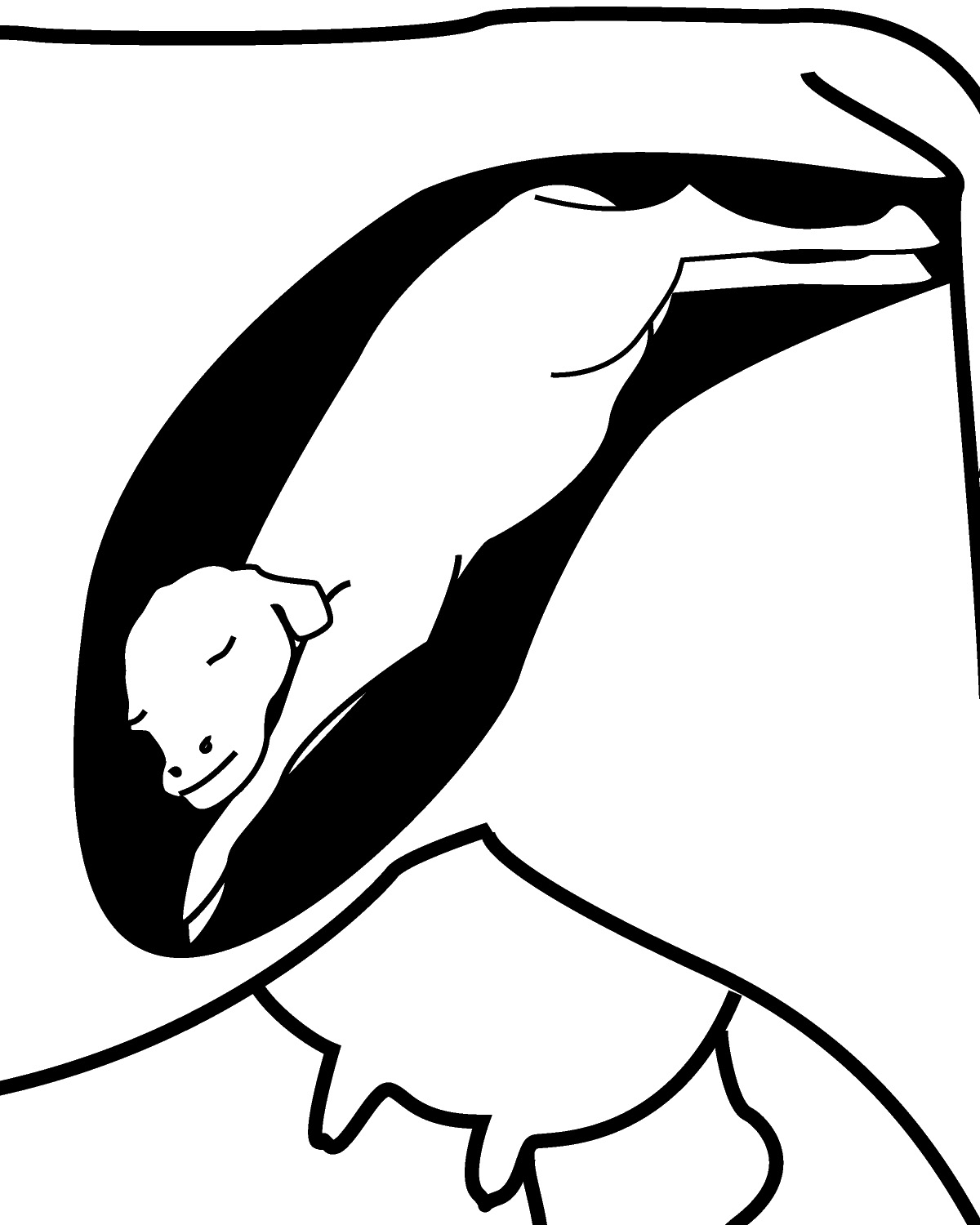
Effigy 3. A posterior presentation

Figure 4. Place loop in a higher place and halfhitch below fetlock joint. Connecting concatenation should be on the top of the leg.
The showtime step is to examine the cow to check calf position and determine if assistance is necessary. It is generally easier to right whatever aberrant presentation if the moo-cow is continuing. If a cow or heifer will not become up, she should be so placed that she is non lying directly on the part of the dogie which has to exist adapted. Thus, if the dogie'due south head is turned back toward the moo-cow's right flank, the moo-cow should be made to lie on her left flank and so that the calf's head is uppermost. This provides more room in the uterus for manipulation.
Once the calf is in a correct anterior or posterior position, delivery will be easier if the cow is lying downwards. When the calf'southward limbs are located, notice out whether they are forelimbs or hindlimbs. To do this commencement by feeling the fetlock and moving the hand up the limb. In the hindlimb the next articulation is the hock with the prominent point. In the forelimb there is also a prominent signal, the betoken of the elbow, simply before this is reached one tin feel the knee joint, which is flat and has no prominences.
The calf may be alive or dead. Sometimes movements can exist detected in a live dogie by placing the fingers in the oral cavity, seizing the tongue, or touching the eyelids.
If the genital passage of the cow is dry or if the dogie itself is dry, plenty of lubricant should be used. Attempts to repel (push dorsum) the calf should be made between labor pains. Similarly, attempts to evangelize the dogie by traction will be a lot easier if they are made to coincide with the contractions of the cow.
Inductive Presentation
An anterior presentation is forefeet first, head resting on the limbs, and the eyes level with the knees (Figure i). As stated above, in this presentation the moo-cow does non ordinarily require assistance, unless it is a heifer at offset calving, the calf is dead, or the dogie is too big for the moo-cow.
If the calf is dead, necktie a chain around the head backside the ears and laissez passer it through the mouth. This will prevent the caput from twisting when the limbs are being pulled. With a alive calf you tin do this by placing a manus on the caput and ensuring that the caput is kept direct. Traction should not exist exerted simultaneously on the head and limbs until the head enters the pelvis. A big calf, with shoulders too wide for the pelvis, is sometimes held up at this phase. If so, pull one limb only then that the elbow and shoulder of i limb only enter the pelvis. Then, while the pull on the limb is continued, the other limb is treated in the same way until both feet project as from the genital passage. Now utilise traction on both limbs and on the head until the head protrudes from the vulva, and from this stage the principle traction is exerted on the limbs again.
It can be seen that traction on both limbs at the same time will result in both shoulders inbound the pelvis at in one case. If the shoulders of a wide-chested calf can be made to enter on a slant and can be pulled through in that position, delivery will be made easier.
Of import: Traction on the calf in the early stages should exist exerted up (in the direction of the tailhead) and not downwardly. Once the calf is in the pelvic crenel, traction should be straight backward then downward. The calf thus passes through the birth culvert in the form of an arc.
If the passage of the hind finish of the calf presents whatsoever difficulty, the body of the calf should exist grasped and twisted to an angle of about 45 degrees. Delivery is and then made with the calf half-turned on its side. This allows for easier passage of a dogie with well-developed stifle joints.
Sometimes a calf gets stuck at the hips (hiplock). Practise not just pull, rotate the calf equally described in a higher place or endeavor turning the cow onto her back, then over onto the side opposite to the one you found her on and try some gentle aid.
Posterior Presentation
In a posterior presentation, both the hindfeet are presented with the calf's spine upward toward the cow's spine (Figure 3), and the sole or bottom of the hooves will face upward. In a normal anterior presentation (head and forelimbs first) the hooves are down. If the calf is on its back, yet, the position of the hooves is reversed in each of these presentations.
In the posterior presentation, the head is the concluding part to be expelled, and at that place is a risk of suffocation or brain damage due to lack of oxygen. Commitment should be as speedily as possible by traction on the hind legs. Traction should be exerted on one limb until the corresponding stifle joint has been drawn over the pelvic brim. It may be necessary to button the other limb partly back into the uterus at the aforementioned time. In this mode the two stifle joints will enter separately into the pelvis and assist easier delivery.
After the first limb has been drawn back sufficiently, traction should be applied to both limbs simultaneously. If this does non succeed, cross one limb over the other and pull on the lower limb. This will make the calf rotate slightly to ane side and delivery will go on more smoothly.
The calf'south tail may take a tendency to protrude upward and damage the superlative of the vagina. Be sure the tail is down betwixt the legs by placing your manus on the tailhead while the dogie is inbound the pelvic cavity.
After delivery of posterior presentation, more conscientious attending should be given to removal of mucus from the mouth and olfactory organ because of a greater danger of suffocation than in an anterior presentation. A strong straw should be used to briskly tickle the nostril of the newborn. This will stimulate the calf to snort, sneeze or cough and inhale air into the lungs to begin breathing every bit soon as possible.
Other Ideas on Pulling Calves
The chain should be tightly attached above the fetlocks with a half-hitch below the fetlock before applying traction in anterior or posterior presentations. If it becomes necessary to pull on the jaw or head, endeavor to do it by paw or use a soft cotton or nylon rope being careful not to apply excessive pull so as non to fracture the jaw or damage the spinal cord. If a rope is used use the rope behind the poll and through the rima oris. Protect the birth culvert from laceration by the sharp teeth by guiding the head with your hand. After the head and neck have passed through the cervix, traction should be practical to the legs only.
Traction should be applied in a steady, even fashion. Hasty, irregular pulls are painful and dangerous. But pull when the cow is straining. If you are pulling and a sudden obstruction occurs, stop and examine the birth culvert and calf to find out what is wrong earlier proceeding. To avoid lacerations to the soft birth culvert, time should be allowed for enlargement of the nascence culvert equally the dogie advances.
Abnormal Presentations
The post-obit figures illustrate presentation of the calf other than anterior or posterior presentations.
Two Front Legs Presented: Caput Retained
If the caput cannot be felt, do not assume the calf is coming backward. The 2 forepart legs may be presented and the head retained (Figure 5). Earlier pulling on the limbs, distinguish between forelimbs and hindlimbs as described earlier. Where the caput is bent back into the correct flank of the cow information technology will be easier to right if the left paw is used and vice versa. By grasping the cage, the ear, or the lower jaw; or by placing the thumb and middle finger in the heart sockets, the head tin can be raised and directed into the pelvis. Do non pull hard on the jaw because the jaw tin be easily cleaved.
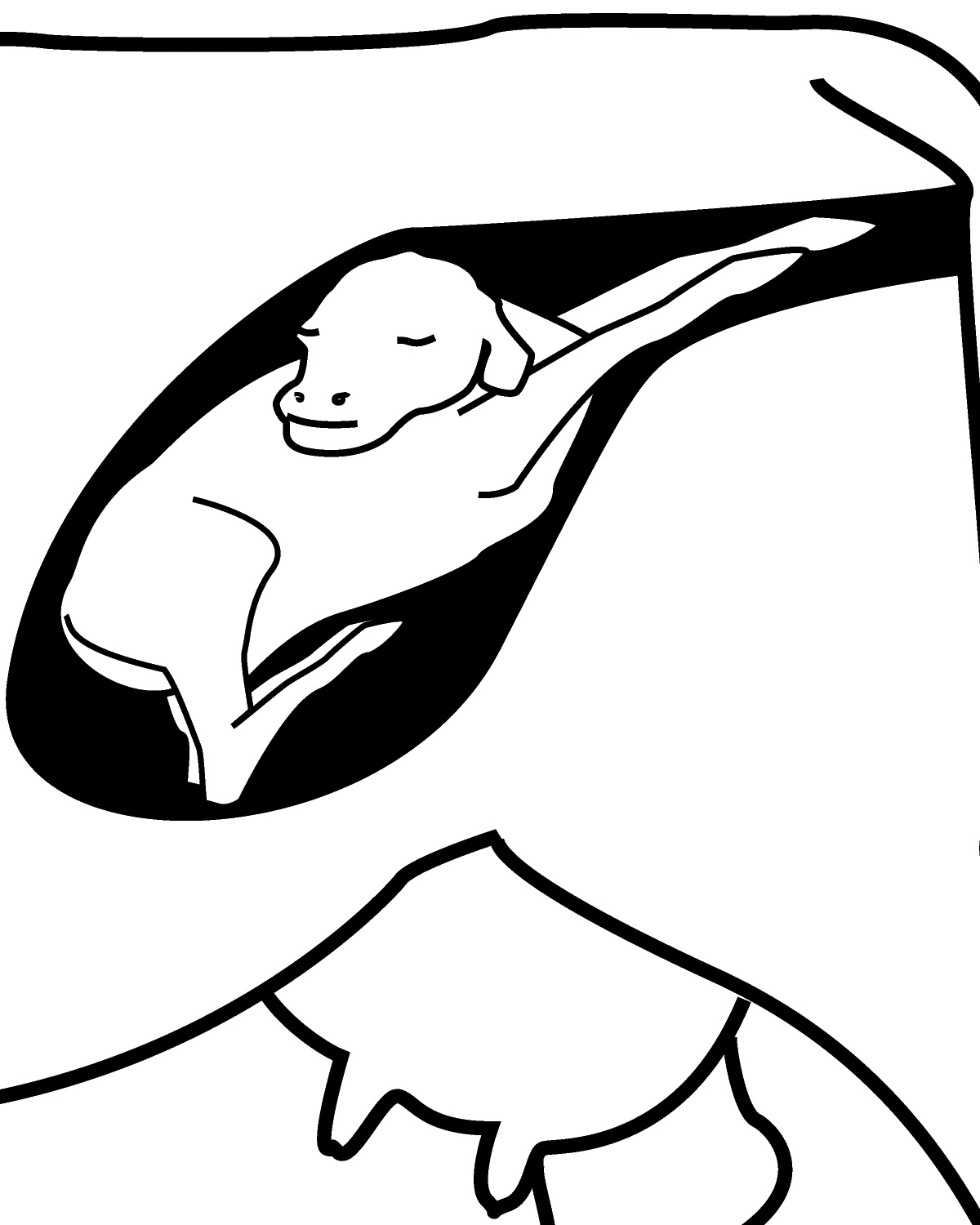
Effigy 5. Two front end legs presented with head dorsum
In all these cases, the caput can exist brought up and straightened more hands if the body of the dogie is at the same time pushed farther dorsum in the uterus. This tin can be done past placing the hand between the front legs and pushing back the chest, the head being pulled at the same time with aid of a chain placed on the lower jaw. Try to conduct out all these operations when the cow is not straining vigorously.
Head Betwixt Forelegs
Sometimes the head falls well downward between the legs (Figure six). Replace one or both limbs into the uterus to raise the head by one of the methods described above.
Another method is to plow the cow on her back. The head of the dogie will fall toward the cow'due south spine and and then tin be more easily guided into the pelvis past a mitt lone or else by a loop around the lower jaw.
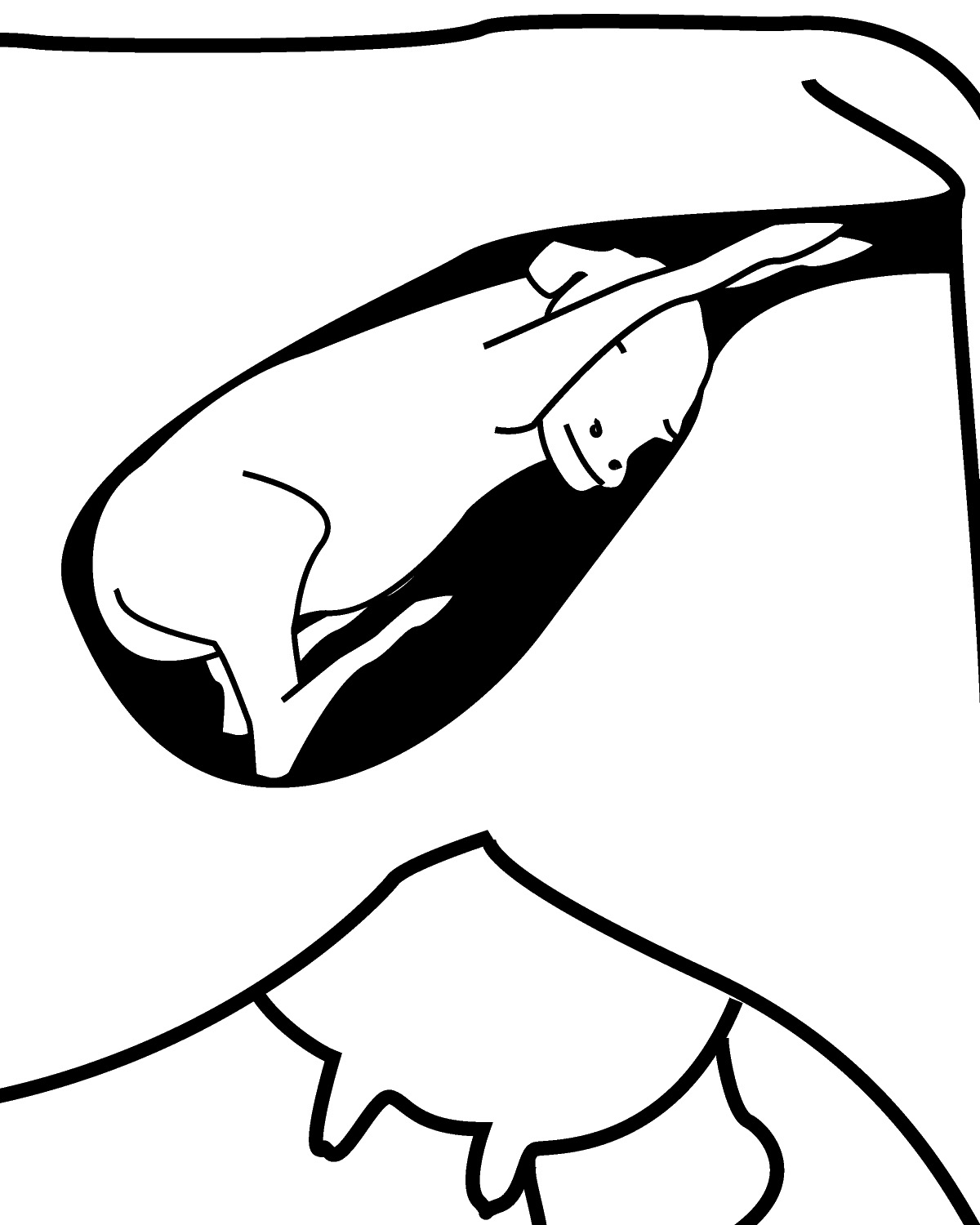
Figure six. Two front end legs presented with caput dorsum between legs
Head Out: One or Both Forelegs Retained
The calf may have the head out, but one or both forelegs retained (Figure 7). Secure the head by placing a concatenation or rope behind the poll and through the mouth so lubricate the head and push information technology dorsum into the uterus. Then search for the limbs one at a time. Each limb should exist grasped simply above the fetlock and bent at the knee. Now push the aptitude knee toward the spinal column and push back so as to curve all the joints of the limb. Meanwhile the hand is gradually moved down the limb toward the fetlock. Now enhance the fetlock over the pelvic brim and the leg tin movement forwards.
If the manus alone does not work, chain the fetlock. Button the knee at the aforementioned fourth dimension and pull the rope. Cover the hoof to avoid damage.

Figure 7. Calf presented with its caput in the birth culvert but i or both forelegs retained.
Breech Presentation
Figure 8 shows a breech presentation. The calf has to exist repelled well back into the uterus. Then grasp a leg below the stifle and work a manus down to the human foot. Place the hoof into the palm of your hand, withdrawing you arm until the pes is fatigued over the pelvic brim. This manipulation is made easier by rotating the hock outward as the foot is pulled up and back.
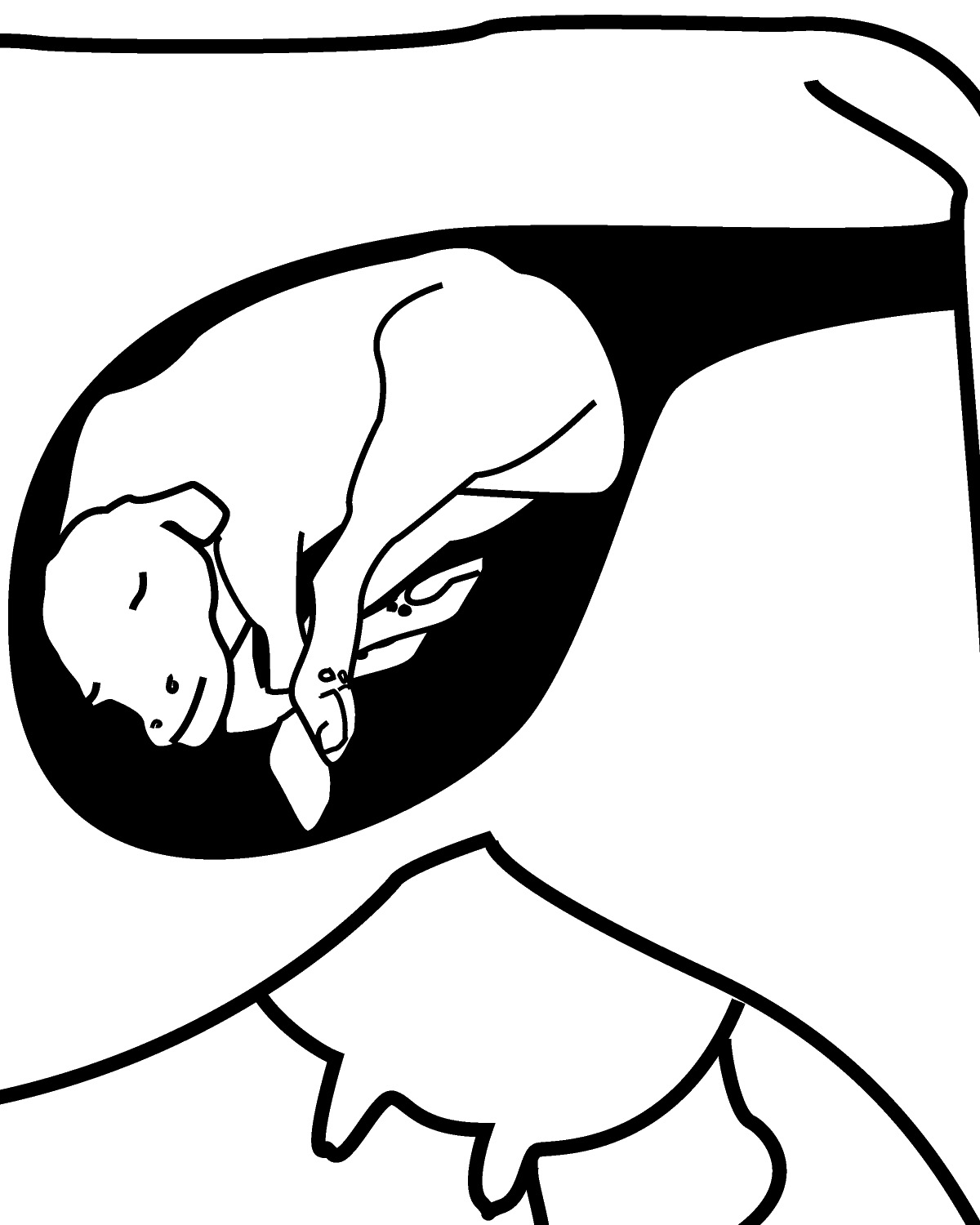
Figure viii. Calf presented in breech position.
Twins
If twins enter the vagina one at a time, at that place is no problem. Withal, occasionally twins are presented together and block the birth canal. In most of these cases 1 comes caput first and the other tail first (Effigy nine). Extract the closest twin. If in dubiousness, first extract the twin presenting hindlegs afterward commencement repelling the other twin far into the uterus.
Earlier this, make certain both limbs vest to the same calf. To exercise this, feel along each limb to where it joins the body and feel along the body to the opposite limb. Rope each limb separately and identify the ropes for each twin. If i or both twins are abnormally presented, right as in a single nascency before attempting commitment.
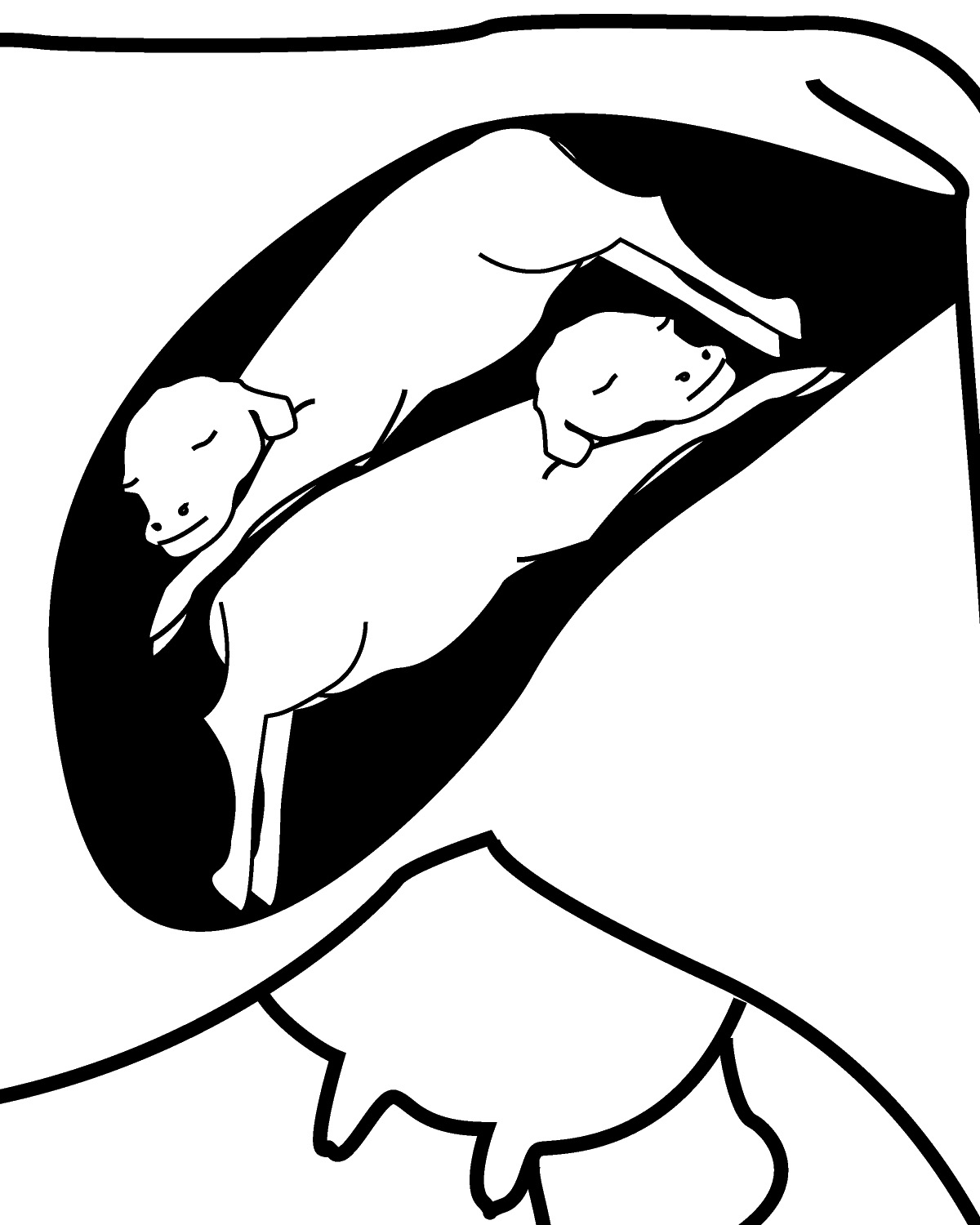
Figure ix. Twin calves entering the nativity canal.
Rotating the Calf at Parturition to Aid in Delivery
Pulling on a calf should just exist done when the presentation and posture of the calf are correct. This applies to both the inductive (forrard) position (Figure 1) and the posterior (backward) position (Figure 3). A large calf, with shoulders too broad for the pelvis, is sometimes held up at this stage (Figure 10). If so, pull i limb simply and then that the elbow and shoulder of one limb only enter the pelvis. Then, while the pull on the limb is continued, the other limb is treated in the same mode until both anxiety project equally from the genital passage. Now use traction on both limbs and on the head until the head protrudes from the vulva, and from this phase the principle traction is exerted on the limbs once more. It tin can be seen that traction on both limbs at the same fourth dimension volition consequence in both shoulders entering the pelvis at once.
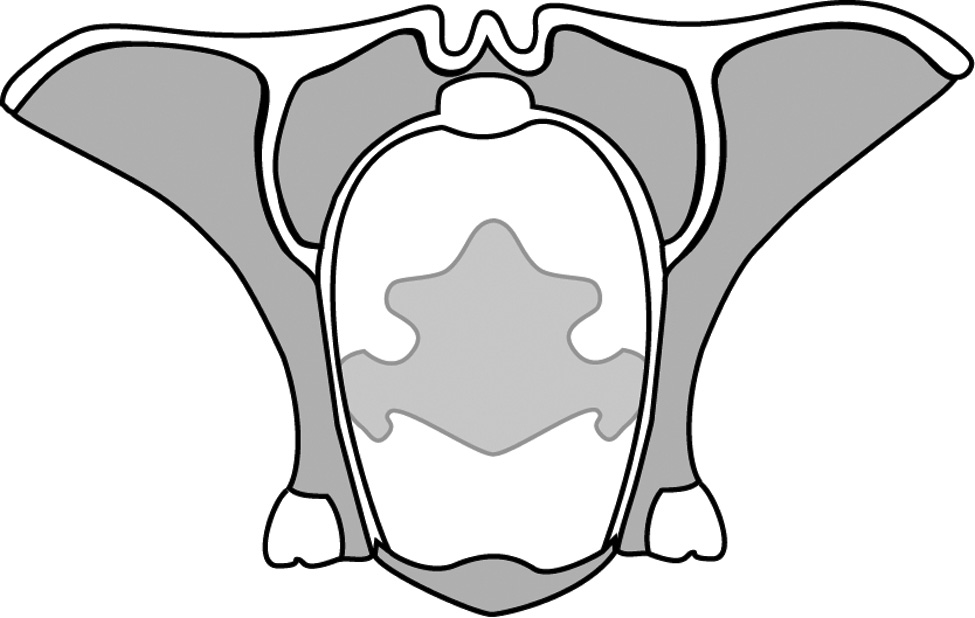
Figure 10. The shoulders or hips of a large dogie may be wider than the horizontal axis of the pelvic opening.
The pelvis has an oval shaped opening with the largest dimension being the vertical axis, and the smaller dimension is the horizontal width. If the shoulders of a large nascency weight dogie tin can exist made to enter on a slant and tin can be pulled through in that position, delivery will be fabricated easier. Utilize traction that will permit the dogie to be turned well-nigh xc degrees so that the widest function of the shoulders will match the largest dimension of the pelvic opening (Figure 11).
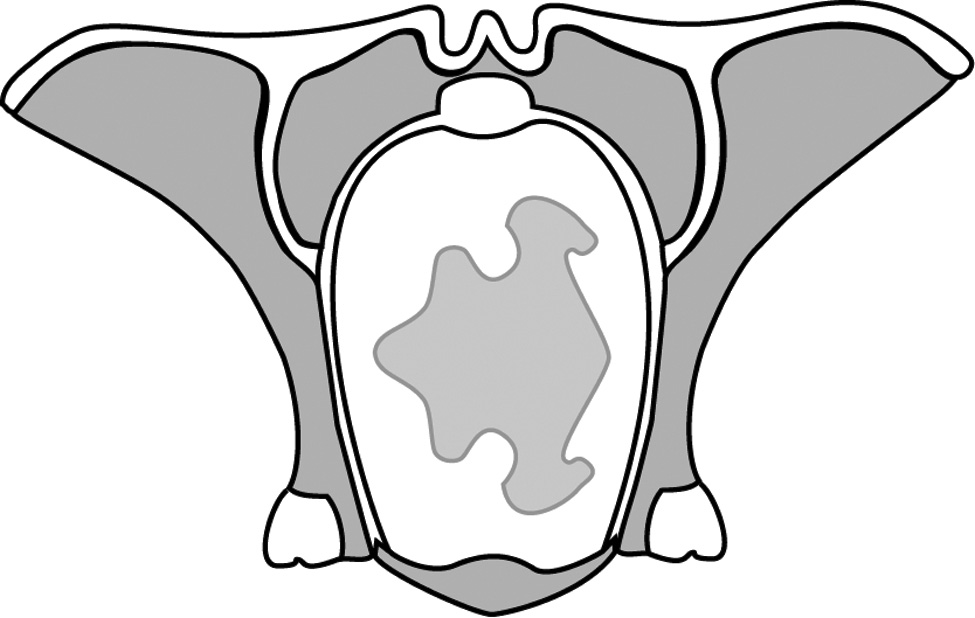
Figure 11. Rotation of the dogie to friction match the widest dimensions of calf and pelvic opening.
After the shoulders have passed the pelvic opening, the calf tin be returned to the normal upright position because the body is larger in the vertical dimension (Effigy 12).;
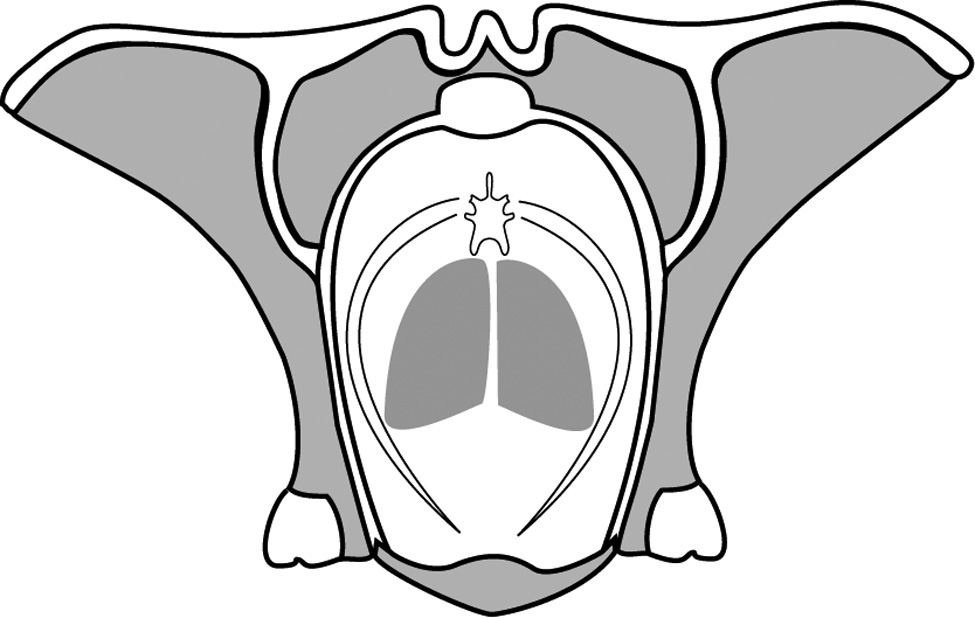
Effigy 12. Rotating the calf back to the upright position to match the depth of the thoracic cavit with the depth of the pelvic opening.
Hiplock is the next likely obstruction that is met when pulling a dogie. If the passage of the hind end of the calf presents any difficulty, the body of the calf should be grasped and twisted to an bending of about 45 degrees. Delivery is and then made with the calf half-turned on its side. This allows for easier passage of a calf with well-developed stifle joints.
Prolapses
Prolapses occur occasionally in beef cows. Most prolapses occur very almost the fourth dimension of calving. Two distinct kinds of prolapse exist.
Uterine prolapse requires immediate attending and if treated soon, about animals have an uneventful recovery. If they later on rebreed and become pregnant there is no reason to cull animals suffering uterine prolapse after calving. Uterine prolapse is not probable to reoccur. Some may suffer uterine damage or infection that prevents conception and should therefore exist culled. If the uterus becomes badly traumatized earlier treating, the fauna dies from shock or hemorrhage.
Vaginal prolapse, however, that which occurs before calving is a heritable trait and is probable to reoccur each yr during belatedly pregnancy. Such animals should non be kept in the herd. The condition will eventually result in the loss of cow, calf, or both plus her female offspring would be predisposed to vaginal prolapse.
Enquiry (Patterson, et al, 1981) from the USDA station at Miles Metropolis, Montana, reported that 153 calvings of xiii,296 calvings from a fourteen-year span were associated with prolapse of the reproductive tract. Of those 153 prolapses, 124 (81%) were vaginal prolapses and 29 (19%) were uterine prolapses. The subsequent pregnancy rate following prolapse among first calf heifers was 28% and the pregnancy charge per unit among adult cows following a prolapse was only 57.ix%.
Table 2. Gestation table (based on 283 days)
| Breeding Engagement | Due Engagement | Breeding Appointment | Due Appointment | Breeding Engagement | Due Date | Breeding Date | Due Date | Breeding Engagement | Due Engagement | Convenance Engagement | Due Date |
|---|---|---|---|---|---|---|---|---|---|---|---|
| Jan ane | Oct x | March 3 | Dec 10 | May 3 | Feb 9 | July 3 | Apr 11 | Sept ii | June 11 | Nov ii | Aug xi |
| Jan 2 | Oct eleven | March iv | Dec 11 | May 4 | Feb 10 | July 4 | April 12 | Sept 3 | June 12 | Nov 3 | Aug 12 |
| Jan iii | Oct 12 | March five | Dec 12 | May 5 | Feb eleven | July five | April xiii | Sept 4 | June 13 | November iv | Aug thirteen |
| January 4 | Oct 13 | March 6 | December 13 | May half dozen | Feb 12 | July vi | Apr xiv | Sept 5 | June fourteen | Nov 5 | Aug 14 |
| Jan v | Oct 14 | March 7 | Dec 14 | May seven | February 13 | July vii | April 15 | Sept half dozen | June 15 | November 6 | Aug xv |
| January 6 | Oct 15 | March 8 | Dec 15 | May 8 | Feb 14 | July 8 | Apr sixteen | Sept 7 | June 16 | Nov 7 | Aug xvi |
| Jan 7 | Oct 16 | March 9 | December xvi | May 9 | Feb 15 | July ix | April 17 | Sept 8 | June 17 | Nov 8 | Aug 17 |
| Jan 8 | Oct 17 | March x | Dec 17 | May x | Feb 16 | July ten | April eighteen | Sept 9 | June eighteen | Nov nine | Aug xviii |
| Jan 9 | Oct 18 | March eleven | Dec 18 | May 11 | Feb 17 | July 11 | April 19 | Sept x | June xix | Nov x | Aug 19 |
| Jan 10 | October nineteen | March 12 | December xix | May 12 | Feb eighteen | July 12 | Apr 20 | Sept 11 | June 20 | Nov 11 | Aug 20 |
| Jan 11 | October 20 | March 13 | Dec 20 | May 13 | Feb 19 | July 13 | Apr 21 | Sept 12 | June 21 | Nov 12 | Aug 21 |
| Jan 12 | Oct 21 | March 14 | Dec 21 | May 14 | February 20 | July 14 | April 22 | Sept xiii | June 22 | Nov 13 | Aug 22 |
| January thirteen | Oct 22 | March 15 | Dec 22 | May 15 | February 21 | July 15 | April 23 | Sept 14 | June 23 | November xiv | Aug 23 |
| Jan 14 | Oct 23 | March 16 | Dec 23 | May 16 | Feb 22 | July 16 | April 24 | Sept 15 | June 24 | Nov 15 | Aug 24 |
| Jan 15 | Oct 24 | March 17 | Dec 24 | May 17 | Feb 23 | July 17 | April 25 | Sept xvi | June 25 | Nov 16 | Aug 25 |
| Jan 16 D | Oct 25 | March 18 | Dec 25 | May 18 | Feb 24 | July 18 | April 26 | Sept 17 | June 26 | Nov 17 | Aug 26 |
| January 17 | October 26 | March 19 | Dec 26 | May nineteen | Feb 25 | July 19 | April 27 | Sept xviii | June 27 | Nov eighteen | Aug 27 |
| Jan 18 | October 27 | March 20 | Dec 27 | May 20 | Feb 26 | July 20 | April 28 | Sept 19 | June 28 | Nov 19 | Aug 28 |
| January 19 | October 28 | March 21 | Dec 28 | May 21 | February 27 | July 21 | April 29 | Sept 20 | June 29 | November twenty | Aug 29 |
| Jan xx | Oct 29 | March 22 | Dec 29 | May 22 | Feb 28 | July 22 | April 30 | Sept 21 | June thirty | Nov 21 | Aug 30 |
| Jan 21 | October thirty | March 23 | Dec xxx | May 23 | March 1 | July 23 | May one | Sept 22 | July ane | November 22 | Aug 31 |
| Jan 22 | Oct 31 | March 24 | December 31 | May 24 | March 2 | July 24 | May two | Sept 23 | July 2 | Nov 23 | Sept 1 |
| Jan 23 | Nov 1 | March 25 | Jan 1 | May 25 | March 3 | July 25 | May 3 | Sept 24 | July three | Nov 24 | Sept ii |
| Jan 24 | Nov 2 | March 26 | January 2 | May 26 | March 4 | July 26 | May iv | Sept 25 | July 4 | November 25 | Sept iii |
| Jan 25 | November three | March 27 | Jan iii | May 27 | March v | July 27 | May 5 | Sept 26 | July 5 | Nov 26 | Sept four |
| Jan 26 | Nov 4 | March 28 | January 4 | May 28 | March 6 | July 28 | May half-dozen | Sept 27 | July 6 | Nov 27 | Sept five |
| Jan 27 | Nov five | March 29 | January 5 | May 29 | March 7 | July 29 | May 7 | Sept 28 | July 7 | Nov 28 | Sept half dozen |
| Jan 28 | Nov 6 | March 30 | January 6 | May 30 | March 8 | July thirty | May 8 | Sept 29 | July viii | November 29 | Sept 7 |
| Jan 29 | Nov seven | March 31 | January 7 | May 31 | March 9 | July 31 | May 9 | Sept 30 | July 9 | Nov 30 | Sept 8 |
| Jan 30 | Nov 8 | April ane | Jan viii | June 1 | March x | Aug 1 | May 10 | Oct 1 | July 10 | December 1 | Sept 9 |
| Jan 31 | Nov ix | Apr ii | Jan 9 | June two | March 11 | Aug two | May 11 | Oct 2 | July eleven | Dec 2 | Sept 10 |
| Feb ane | Nov 10 | April 3 | Jan 10 | June 3 | March 12 | Aug iii | May 12 | Oct three | July 12 | Dec 3 | Sept eleven |
| Feb 2 | Nov 11 | April four | Jan 11 | June 4 | March 13 | Aug 4 | May 13 | October 4 | July xiii | Dec 4 | Sept 12 |
| Feb 3 | November 12 | Apr 5 | Jan 12 | June v | March fourteen | Aug 5 | May 14 | Oct 5 | July 14 | Dec five | Sept thirteen |
| February 4 | Nov xiii | April 6 | Jan 13 | June vi | March fifteen | Aug vi | May 15 | Oct 6 | July 15 | December 6 | Sept 14 |
| February 5 | Nov 14 | April 7 | January 14 | June seven | March 16 | Aug 7 | May xvi | Oct 7 | July xvi | Dec seven | Sept fifteen |
| Feb 6 | Nov xv | April 8 | Jan 15 | June viii | March 17 | Aug eight | May 17 | Oct eight | July 17 | Dec eight | Sept 16 |
| Feb 7 | Nov 16 | Apr 9 | Jan 16 | June ix | March xviii | Aug ix | May xviii | Oct 9 | July 18 | Dec 9 | Sept 17 |
| Feb viii | Nov 17 | April x | January 17 | June 10 | March 19 | Aug x | May xix | Oct 10 | July xix | Dec 10 | Sept eighteen |
| Feb nine | Nov 18 | April 11 | Jan 18 | June 11 | March twenty | Aug 11 | May xx | Oct 11 | July 20 | Dec 11 | Sept 19 |
| Feb 10 | Nov 19 | April 12 | Jan xix | June 12 | March 21 | Aug 12 | May 21 | Oct 12 | July 21 | Dec 12 | Sept twenty |
| Feb 11 | Nov 20 | Apr 13 | Jan 20 | June 13 | March 22 | Aug thirteen | May 22 | October thirteen | July 22 | Dec 13 | Sept 21 |
| Feb 12 | Nov 21 | April fourteen | Jan 21 | June 14 | March 23 | Aug 14 | May 23 | Oct 14 | July 23 | Dec fourteen | Sept 22 |
| Feb 13 | Nov 22 | April 15 | Jan 22 | June 15 | March 24 | Aug 15 | May 24 | Oct 15 | July 24 | Dec fifteen | Sept 23 |
| February 14 | November 23 | April 16 | Jan 23 | June 16 | March 25 | Aug 16 | May 25 | October 16 | July 25 | Dec 16 | Sept 24 |
| February 15 | Nov 24 | Apr 17 | Jan 24 | June 17 | March 26 | Aug 17 | Nay 26 | Oct 17 | July 26 | Dec 17 | Sept 25 |
| February sixteen | Nov 25 | April 18 | January 25 | June eighteen | March 27 | Aug 18 | May 27 | Oct 18 | July 27 | December 18 | Sept 26 |
| Feb 17 | Nov 26 | April xix | Jan 26 | June 19 | March 28 | Aug 19 | May 28 | Oct 19 | July 28 | Dec 19 | Sept 27 |
| Feb 18 | Nov 27 | April twenty | January 27 | June 20 | March 29 | Aug twenty | May 29 | Oct 20 | July 29 | Dec 20 | Sept 28 |
| Feb 19 | Nov 28 | April 21 | Jan 28 | June 21 | March 30 | Aug 21 | May 30 | Oct 21 | July 30 | Dec 21 | Sept 29 |
| February 20 | Nov 29 | April 22 | Jan 29 | June 22 | March 31 | Aug 22 | May 31 | Oct 22 | July 31 | Dec 22 | Sept xxx |
| Feb 21 | Nov 30 | April 23 | Jan 30 | June 23 | April 1 | Aug 23 | June ane | October 23 | Aug 1 | December 23 | Oct 1 |
| Feb 22 | December i | April 24 | Jan 31 | June 24 | Apr ii | Aug 24 | June 2 | October 24 | Aug 2 | Dec 24 | Oct 2 |
| Feb 23 | Dec two | Apr 25 | Feb 1 | June 25 | April 3 | Aug 25 | June 3 | Oct 25 | Aug three | Dec 25 | Oct3 |
| February 24 | Dec 3 | April 26 | February two | June 26 | April 4 | Aug 26 | June iv | Oct 26 | Aug 4 | Dec 26 | Oct 4 |
| Feb 25 | Dec 4 | April 27 | Feb 3 | June 27 | April five | Aug 27 | June 5 | Oct 27 | Aug 5 | Dec 27 | October 5 |
| Feb 26 | Dec 5 | April 28 | Feb 4 | June 28 | Apr 6 | Aug 28 | June half-dozen | Oct 28 | Aug 6 | Dec 28 | October half-dozen |
| February 27 | Dec half dozen | April 29 | Feb five | June 29 | April seven | Aug 29 | June 7 | October 29 | Aug seven | Dec 29 | Oct 7 |
| Feb 28 | December 7 | April 30 | February 6 | June 30 | April 8 | Aug 30 | June 8 | Oct thirty | Aug 8 | Dec 30 | Oct eight |
| March 1 | Dec 8 | May 1 | Feb 7 | July 1 | April 9 | Aug 31 | June ix | Oct 31 | Aug 9 | Dec 31 | Oct 9 |
| March two | Dec 9 | May 2 | Feb viii | July 2 | April ten | Sept one | June ten | Nov ane | Aug10 |
Summary
Many calving difficulties could be eliminated by proper development of replacement heifers and/or breeding first calf heifers to bulls that will sire calves with beneath boilerplate birth weights. Of virtually importance is to know when to assist, when to quit, and when information technology is time to phone call the veterinarian. Call back the length of stage 2 of parturition is of import to dogie survival and if a problem cannot be corrected inside 20 to 30 minutes, yous should seek assistance. To learn more than about how to help cows or heifers at calving, check out two videotapes available from your local OSU Extension Office. These two videos are chosen VT-323 Calving Management-Parturition and VT-324 Calving Management-Dystocia. In the second video (VT-324), Dr. Larry Rice, Professor-Emeritus, demonstrates how to bank check for cervical dilation.
References
Doornbos, D.E., R.A. Bellows, P.J. Burfening and B.W. Knapp. 1984. Effects of dam historic period, prepartum nutrition, and duration of labor on productivity and postpartum reproduction in beef females. Journal of Animal Science. Vol. 59: pp 1-ten.
Patterson, D.J., R.A. Bellows, and P.J. Burfening. 1981. Furnishings of caesarean department, retained placenta, and vaginal or uterine prolapse on subsequent fertility in beef cattle. Journal of Animal Science. Vol. 53: pp 916.
Putnam, Chiliad.R., L.E. Rice, R.P. Wettemann, K.South. Lusby, and B. Pratt. 1985. Clenbuterol (PlanipartTM) for the postponement of parturition in cattle. Theriogenology. Vol 24. No. 4. pp 385-393.
Glenn Selk
Professor Emeritus
Was this information helpful?
YESNO
sparkgragairehe36.blogspot.com
Source: https://extension.okstate.edu/fact-sheets/calving-time-management-for-beef-cows-and-heifers.html
0 Response to "After a Cow Gives Birth When Does Is Come Into Heat Again"
Post a Comment